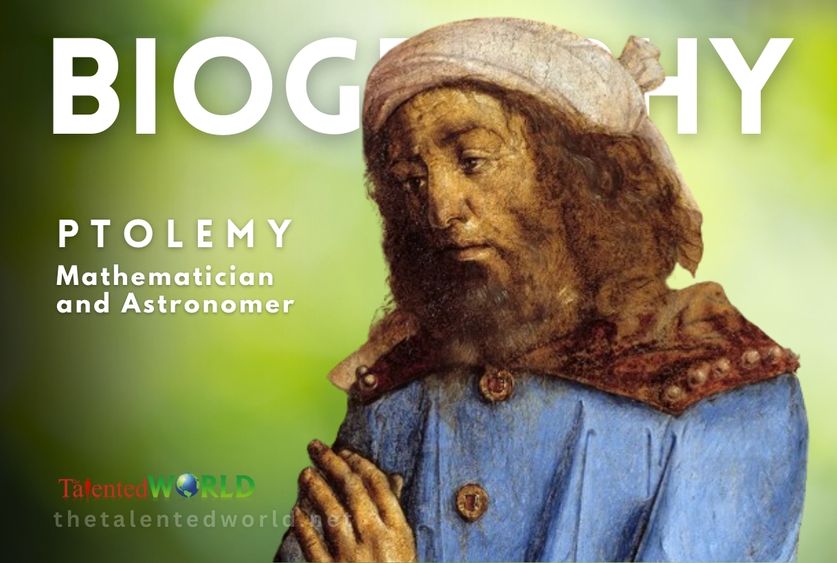| Date of Birth | c. 100 AD |
| Place of Birth | Unknown |
| Date of Death | c. 170 AD |
| Place of Death | Alexandria, Egypt, Roman Empire |
| Citizenship | Possibly Roman; ethnicity: Greco-Egyptian or Hellenized Egyptian |
| Fields | Astronomy, Geography, Astrology, Optics |
| Known for | – Ptolemaic universe |
| – Ptolemy’s world map |
| – Ptolemy’s intense diatonic scale |
| – Ptolemy’s table of chords |
| – Ptolemy’s inequality |
| – Ptolemy’s theorem |
| – Equant |
| – Evection |
| – Quadrant |
| Significant Works | – Almagest (Mathematical Treatise) |
| – Geography |
| – Tetrábiblos (Four Books) |
| Notable Contributions | – Provided the only mathematically sound geocentric model of the Solar System |
| – Influenced Byzantine, Islamic, and Western European science |
| – Contributed to the adaptation of horoscopic astrology to Aristotelian natural philosophy |
| – Work on epicycles has symbolized complex theoretical models to explain a false assumption |
| Biographical Details | – Birthplace is unknown |
| – Lived in or around Alexandria, Roman province of Egypt under Roman rule |
| – Familiar with Greek philosophers Babylonian observations and lunar theory |
| – Addressed a certain Syrus in half of his extant works, whose identity is largely unknown |
| – Died in Alexandria c. 168 |






